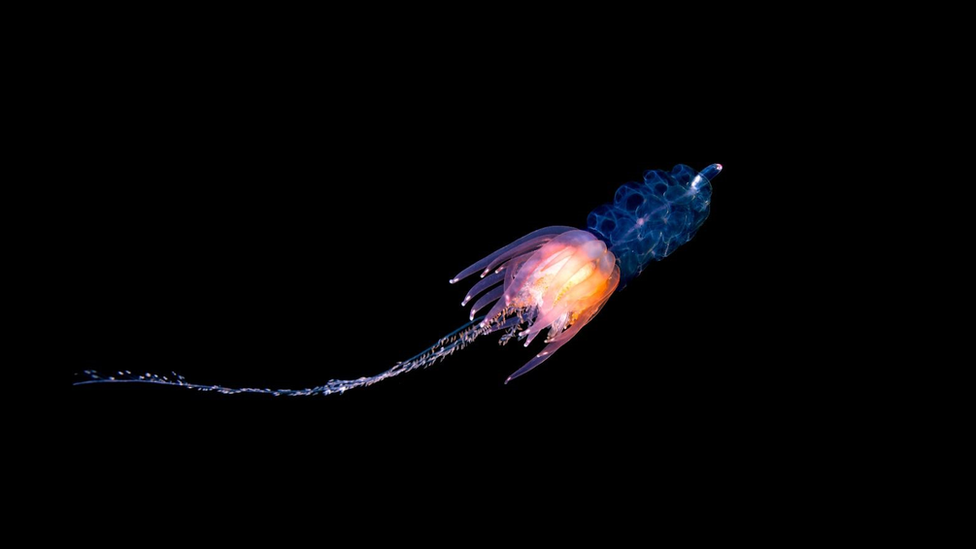Climate change: 40% of ocean's 'twilight zone' species at risk from global warming
- Published
- comments

Life in the ocean's twilight zone could reduce dramatically due to climate change.
Scientists have found that there could be a decline of nearly half of all species who live in this part of the ocean by the end of the century.
The twilight zone lies between 200m and 1,000m below the water's surface.
Even though it gets very little light as it's so deep underwater, it is home to a wide range of species including microbes, plankton and jellies and is an important habitat for marine life.
Why is this marine life at risk from climate change?
Animals in the twilight zone range in size from microscopic to among the largest on the planet.
Some organisms spend their lives in its shadowy depths, while others travel to and from the surface.
The twilight zone also serves an important environmental function as a carbon sink - drawing planet-heating gas out of our atmosphere.
Researchers at the University of Exeter looked at two warm periods in Earth's past - from around 50 million years ago and also 15 million years ago.
By examining records from preserved microscopic shells they were able to find that this part of the ocean was home to fewer organisms during warmer periods of Earth's history.
This is because when the temperature is warmer bacteria can break down food more quickly, meaning less food manages to reach the depths of the twilight zone from the surface.
What might happen in the future for the twilight zone?
The scientists also looked at what might be happening in the twilight zone now, and what could happen in future due to global warming.
Their study found that there could be between 20-40% less life in the twilight zone due to climate change by the end of the century.
Experts say their findings suggest that significant changes may already be underway in the zone and more needs to be done now to prevent the ocean habitat from becoming affected.
Dr Crichton who was involved with the study said, "Unless we rapidly reduce greenhouse gas emissions, this could lead to the disappearance or extinction of much twilight zone life within 150 years, with effects spanning millennia thereafter."
